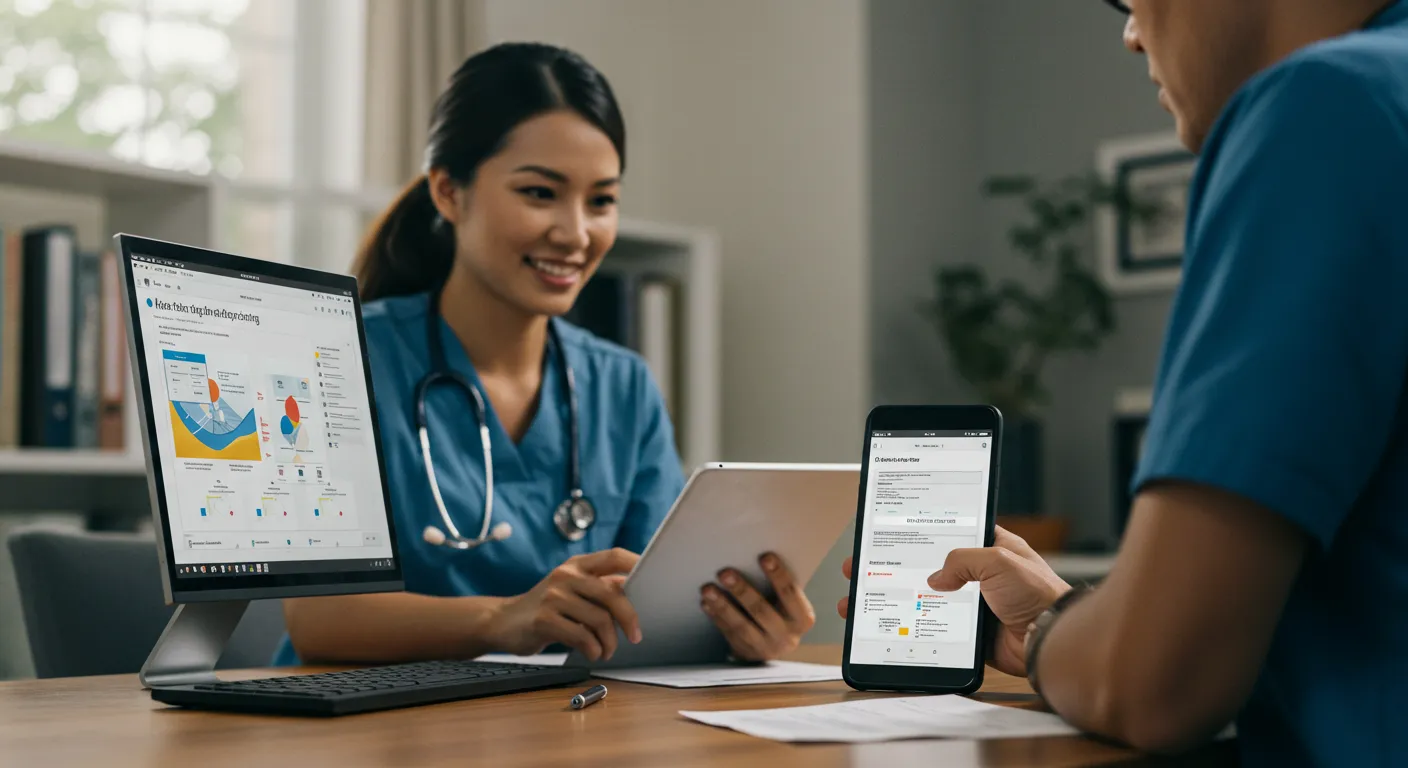Table of Contents
In the rapidly evolving landscape of home health services, mobility is no longer a luxury—it’s a necessity. With caregivers constantly moving between patient homes, clinics, and administrative locations, the demand for mobile-friendly home health care software is higher than ever. Mobile access empowers healthcare professionals to work efficiently, make informed decisions, and stay connected, regardless of where they are.
This article explores why mobile-optimized software is vital for modern home health care, how it enhances caregiver flexibility, and what features to look for when selecting a solution.
Why Mobile-Friendliness Matters in Home Health
Caregivers in home health environments don’t work from fixed offices. They deliver care in patients’ homes, often in rural or underserved areas, and face unique challenges including:
- Limited internet access
- Paperwork overload
- Real-time data entry needs
- Scheduling changes on the fly
Mobile-friendly home health care software addresses these issues by allowing caregivers to access patient records, update documentation, communicate with teams, and complete administrative tasks directly from their mobile devices.
Benefits of Mobile-Optimized Home Health Software
1. Real-Time Access to Patient Data
With mobile access, caregivers can retrieve up-to-date medical histories, medication lists, care plans, and physician notes while in the field. This helps eliminate guesswork, reduces medical errors, and allows caregivers to personalize their care on the spot.
Imagine a nurse arriving at a patient’s home and pulling up the latest wound care instructions or medication changes before even ringing the doorbell—that’s the power of real-time mobile access.
2. Faster, On-the-Go Documentation
Mobile-friendly software allows clinicians to enter patient information during or immediately after the visit. This reduces the risk of errors associated with delayed documentation and ensures that supervisors and physicians receive the most recent updates.
Voice-to-text capabilities, pre-filled templates, and digital signatures further speed up data entry, allowing caregivers to spend more time with patients and less time on paperwork.
3. Dynamic Scheduling and Route Optimization
Home health care schedules can change quickly. A missed appointment, an emergency, or a patient cancellation can disrupt a caregiver’s entire day. Mobile apps allow caregivers to:
- Receive instant schedule updates
- View optimized travel routes
- Communicate scheduling changes with coordinators
This kind of real-time scheduling flexibility reduces missed visits and increases operational efficiency.
4. Offline Functionality
Many caregivers work in areas with spotty internet or limited cellular service. Quality mobile software offers offline functionality, allowing documentation and data access even when offline—with automatic syncing once a connection is restored.
This ensures continuity of care even in challenging environments and reduces the need for redundant paperwork or manual backups.
5. Improved Communication and Collaboration
Mobile-optimized platforms often include secure messaging tools, allowing caregivers to quickly consult with doctors, supervisors, or other team members. Whether it’s sharing photos of a wound, reporting symptoms, or asking for guidance, instant communication strengthens the quality and consistency of care.
How Mobile Access Enhances Caregiver Flexibility
Flexibility is a key factor in caregiver satisfaction and retention. Mobile home health software supports flexible work styles by:
- Reducing administrative load: Caregivers can manage tasks without returning to the office.
- Improving work-life balance: Less time on documentation means more time for patients—and personal life.
- Enabling multitasking: Tasks like documentation, scheduling, and communication can all happen in one interface.
- Increasing autonomy: Real-time data access allows caregivers to make informed decisions without needing constant managerial input.
For agencies, this flexibility results in better staff performance, fewer errors, and higher patient satisfaction.
Key Features to Look For in Mobile-Friendly Home Health Care Software
If you’re evaluating a home health care solution, make sure it includes the following mobile features:
- Native mobile apps (iOS and Android)
- User-friendly interface designed for small screens
- Offline access with auto-sync
- Secure messaging and communication tools
- Voice-to-text documentation
- In-app scheduling and route mapping
- HIPAA-compliant security protocols
Agencies should also assess how well the mobile app integrates with their existing workflows and desktop systems.
Final Thoughts
Mobile-friendly home health care software is not just a convenience—it’s a catalyst for better care delivery, caregiver satisfaction, and operational efficiency. By equipping clinicians with tools they can use on the go, agencies can reduce friction, improve documentation accuracy, and ensure patients receive the most responsive, personalized care possible.
As the home health industry continues to embrace digital transformation, choosing mobile-optimized tools will be critical to staying competitive, compliant, and patient-focused.




